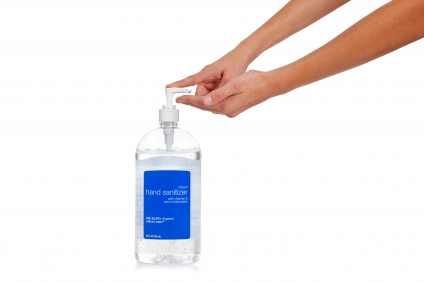Hand Sanitizer Can Lead to Positive Alcohol Test

Frequent use of alcohol-containing hand sanitizer won't get you drunk, but it may lead you to test positive in a urine test for alcohol consumption, according to a recent study.
In the study, 11 volunteers who had not consumed alcohol in five days prolifically applied a popular brand of hand sanitizer, Purell, to their hands. According to the manufacturer, 62 percent of Purell consists of ethyl alcohol. By day's end, the urine of eight of the subjects contained levels of an alcohol-breakdown product that would indicate the subjects had recently consumed alcohol.
You'd have to go through large quantities of the stuff before you needed to worry about a positive test result. Just how much? Participants applied one squirt of sanitizer to their hands every five minutes for 10 hours a day for three days. That's the equivalent of about 4 ounces (120 milliliters) per day, or an ounce more than the maximum bottle size you can carry on an airplane.
Still, the researchers said this might be a problem for health care professionals who frequently apply hand sanitizer. Some individuals with a history of drug or alcohol problems are required by their employer to abstain from alcohol and undergo frequent drug tests.
"We would encourage these individuals to be aware of the myriad sources of alcohol they can come across in daily life," said study researcher Gary Reisfield, an assistant professor in the department of psychiatry at the University of Florida College of Medicine. Reisfield notes that products such as cough syrup, aftershave and mouthwash all contain alcohol, and exposure to these substances also might add up to a positive urine test result.
Too much sanitizer
A breathalyzer alcohol test measures the amount of alcohol in your breath. But alcohol in the breath will dissipate after a few hours. Urine tests screen for breakdown products of alcohol that are more enduring, including one called ethyl glucuronide.
Sign up for the Live Science daily newsletter now
Get the world’s most fascinating discoveries delivered straight to your inbox.
Levels of ethyl glucuronide above 500 nanograms per milliliter in the urine indicate an individual has consumed alcohol in the past few days. Eight of the participants in Reisfield's study had levels of ethyl glucuronide above this amount.
None of the participants would have tested positive on a breathalyzer alcohol test, Reisfield said.
Alternative alcohol marker
When Reisfield and his colleagues looked for the presence of another alcohol breakdown product, ethyl sulfate, they found no detectable levels. This suggests that levels of ethyl sulfate could be used to distinguish between individuals who have consumed alcohol and those who have come into contact with products that contain alcohol, Reisfield said.
The study was published in the March issue of the Journal of Analytical Toxicology.
Pass it on: Applying very large amounts of hand sanitizer may lead to a positive test result on a drug urine test for alcohol.
This story was provided by MyHealthNewsDaily, a sister site to LiveScience. Follow MyHealthNewsDaily staff writer Rachael Rettner on Twitter @RachaelRettner.

Rachael is a Live Science contributor, and was a former channel editor and senior writer for Live Science between 2010 and 2022. She has a master's degree in journalism from New York University's Science, Health and Environmental Reporting Program. She also holds a B.S. in molecular biology and an M.S. in biology from the University of California, San Diego. Her work has appeared in Scienceline, The Washington Post and Scientific American.









